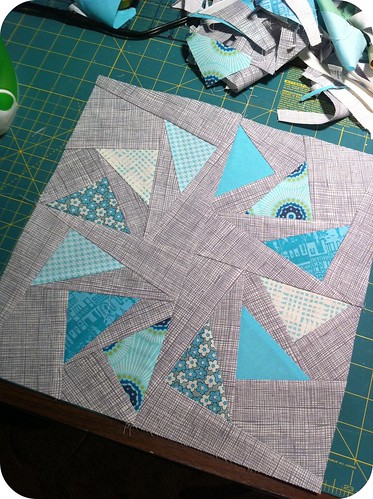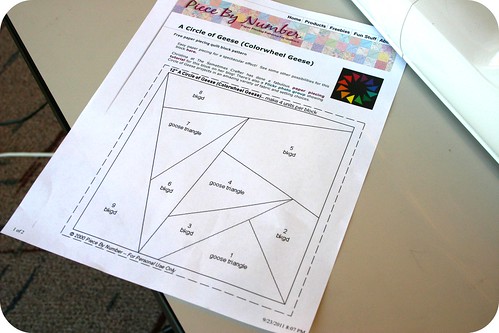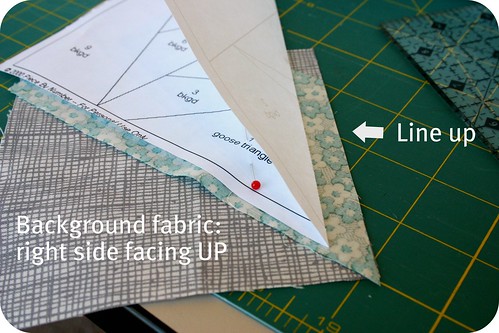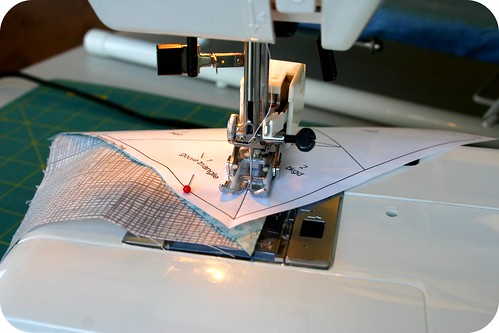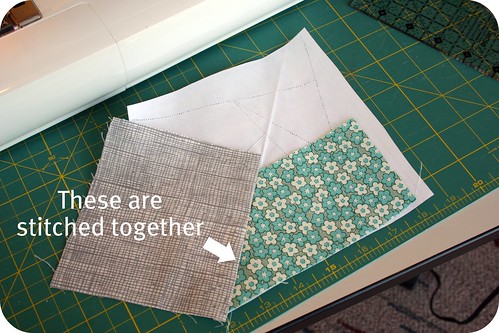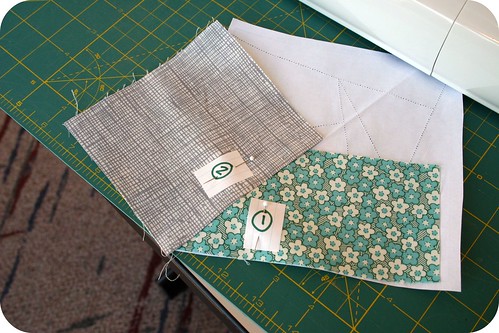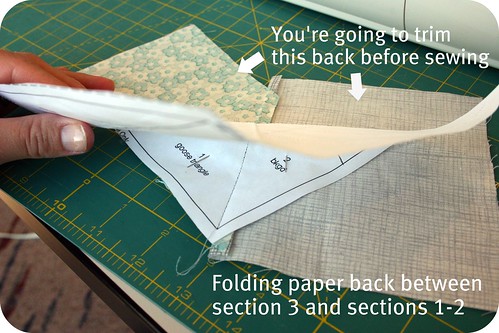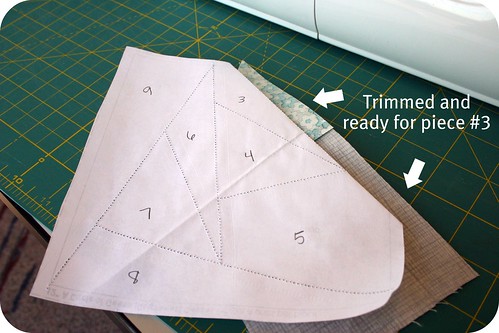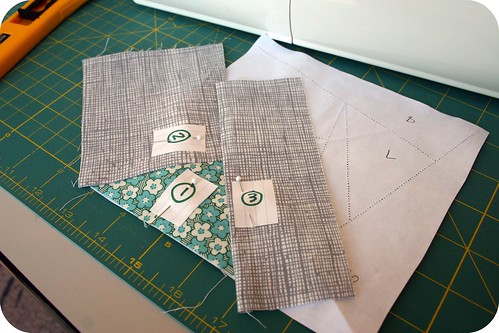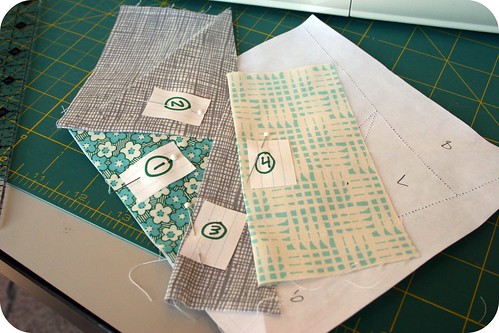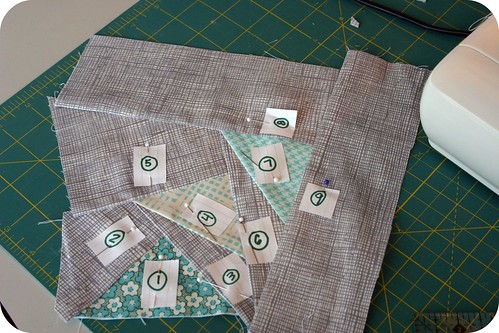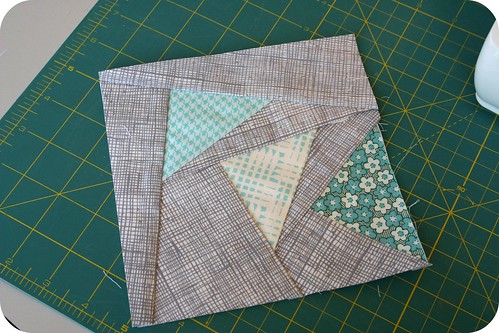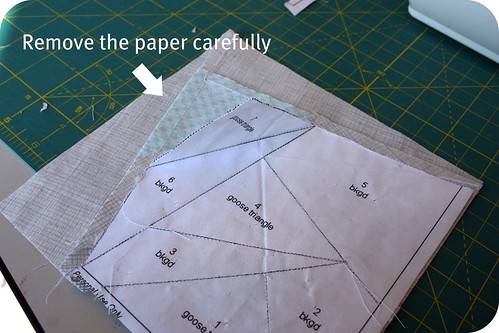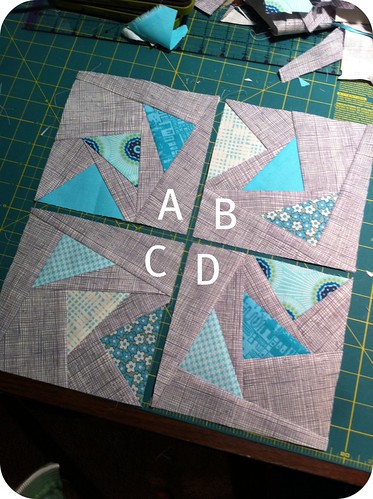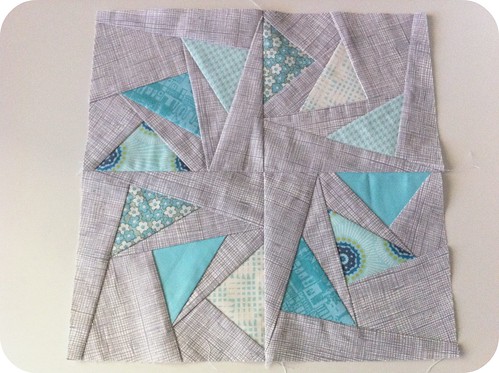Hey Everyone!! I have missed you... I have been FLAT out this week! Literally...!! Ill explain later...
But for today... I am so excited to Introduce Cara to you!! She is a super Mum! She has put an amazing Tute together for us... The Circle of Geese Block.. I have absolutely NO IDEA how to make this block so i jumped up and down when she said she would share this with us..... Thanks Cara... xx
Hello Chasing Cotton readers! I'm Cara from
Me? A Mom? and I'm so honored Bec asked me to come over and teach you all a block.
Today I'm going to show you how to successfully sew a Circle of Geese block without hurling your scissors across the room or pulling out your hair. This is one of those blocks that can intimidate many but trust me when I say if
I can do it,
you can do it.
This is a paper-pieced block which means you stitch your fabric onto a piece of paper following the lines that are pre-printed on the paper. And it really is that easy once you get the knack of it. This block is a lot like learning how to ride a bike. It might be hard at first but, once you learn it, you wonder how you ever struggled.
The trickiest part of assembling this block, in my opinion, is that it involves lots of turning and flipping and folding back of fabric and paper pieces. It's easy to get confused and make mistakes so this tutorial has a ton of pictures.
This tutorial also involves some extra steps to help you avoid issues. As you get more comfortable with how to assemble the block, you can cut out some of the extra steps. Or you can throw caution to the wind and just skip them all together from the get go.
Okay, so let's get started.
First you need the
template. I like to use
this one. (Note: sometimes that link doesn't work for whatever reason. If that's the case for you, go to
http://www.piecebynumber.com/and go to the freebie tab. Look under geometric and you'll see the circle of geese block.) When you print it out, make sure it's printing full scale and not being scaled down. I had to decrease my margins to get it to properly fit on one page. You'll need four copies for each block. Print out a few extras to have on hand.
Next, cut it out ALONG the
dotted line. This will be the finished size of your block section and you'll use the edge of the paper as your trim line when you are finished, so cut it out neatly and accurately.
As you'll see, the sections of this template are numbered. Throughout this tutorial, I'll be referencing these pieces by their number (#1, #2, #3, etc).
Because you will eventually be tearing the paper off from the fabric, I highly recommend perforating the lines on the paper before you begin sewing. To do this, simply stitch along all the inside lines without thread in your needle. IMPORTANT: set your stitch length to the smallest setting so that your stitches -- or in this case, the holes -- are close together.
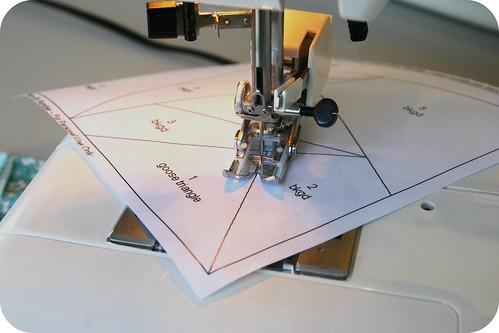
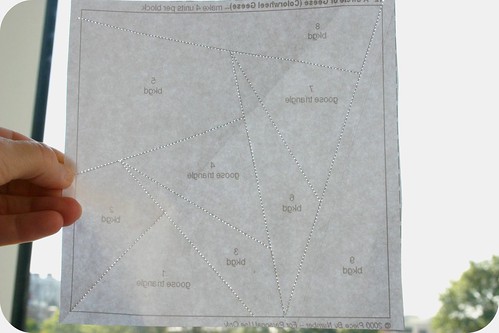
The other nice thing about perforating the lines in advance is that it's handy for when you need to fold back the paper along the lines. And in this tutorial, you'll be doing that a lot.
Okay, next step.
Cut out fabric for your background pieces and fabric for your goose triangle pieces. I find 3" x 5" is a good size; you can go smaller as you get more comfortable but I like to give myself room for error. The first few times you assemble this block, it's helpful to start with larger cuts of fabric. Most of my early mistakes involved using a piece that I
swore was big enough but after sewing and turning it, it would be too short. Trust me when I say you'd rather have some fabric waste than the frustration of having to unpick a section because it ended up being a few millimeters short.
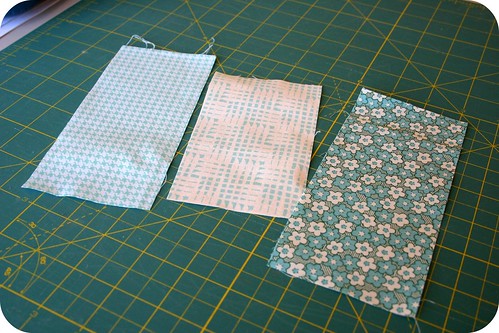 |
| For my goose triangles. |
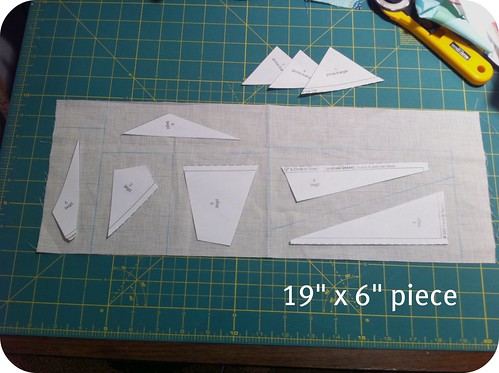 |
| If fabric waste is a concern, a 19" x 6" piece will fit all six background pieces. |
Alright, now grab your paper template. You will use the numbers on the paper template as your guide for where to start and where to go next. We'll work in numerical order, so your first stitched line will be the line between #1 (goose triangle) and #2 (bkgd).
Take the fabric piece for your first goose triangle and lay it with the wrong side facing up (right side facing down). Place your template on top of the fabric with the words facing up.
Fold the paper template together at the line between #1 and #2 and -- using the edge created by the fold as a guide, trim the fabric to leave what will be a 1/2" seam allowance. (As you get better at this block and need less room for error, you can trim it to 1/4" instead.)
Now you are ready to position the fabric for #2.
I know, I know, when are we going to start stitching, right? Hang with me. Place the background fabric (#2) right side facing up
under the #1 fabric. Line them up as noted on the photo below and pin.
Let's stitch! Fold your paper flat again and stitch along the line between #1 and #2.
After you are finished stitching, fold the paper back again at the line between #1 and #2 and use the edge of the paper to trim the fabric to 1/4 inch seam allowance. Like I said, you can skip this step obviously if you initially trimmed to 1/4 inch seam allowance in the previous step.
Now turn the paper over and press your fabrics open.
Okay, now from here on out on this tutorial, my photos are going to show the pieces labeled so that you don't get confused. You don't have to do this at home, though I do find it helpful to write the numbers on the back of the paper.
Okay, now you're ready to move onto #3, a background piece. Place your sewn pieces right side down and fold your paper along the line between #3 and #1-#2. Go ahead and trim (leaving either 1/4" or 1/2").
Now you're ready to place and sew piece #3.
You can either slip piece #3
under the #1, #2 pieces or flip the block over and place piece #3
on top of pieces #1 and #2 (like in the picture below). Which ever way you pick, just be sure your fabrics are right sides together.
Stitch along the line between #3 and #1-#2. Turn paper over and press fabrics open.
Next you'll turn your paper over so the fabric is right side down. Fold back the paper along the line between #3 and #4. Continue to repeat the same previous steps of trimming, lining up the next fabric piece, pinning, folding the paper flat, stitching, and ironing the fabric open.
Are you getting the hang of it? Go ahead and finish up #5, #6, #7, #8 and #9 following the same steps as above. Just remember to go in sequential order.
Almost done! Time to trim. Use the paper as your guide and trim
to the paper. If you are trimming paper off, you are trimming too much. (Sorry, I forgot to get a shot of what the block looks like on the back before trimming.)
When you are ready, carefully remove the paper. I find that it helps to start with removing #9 and working backwards (#8, #7, #6, etc.).
Once you have four sections completed, you are ready to arrange them and sew them together.Sew A to B and set aside. Sew C to D and set aside. Then sew AB to CD and you're done!
Ta-da! Aren't
you fancy!!
Hopefully, I've been able to demystified the Circle of Geese block for you and you're not cursing my name right now. Happy sewing!! Feel free to come over to
my blog and say hello!
Thanks sooooooooooooooooooo Much Cara!!! xx Mystery solved!! xx I hope you enjoyed her Tute... I did! xx































